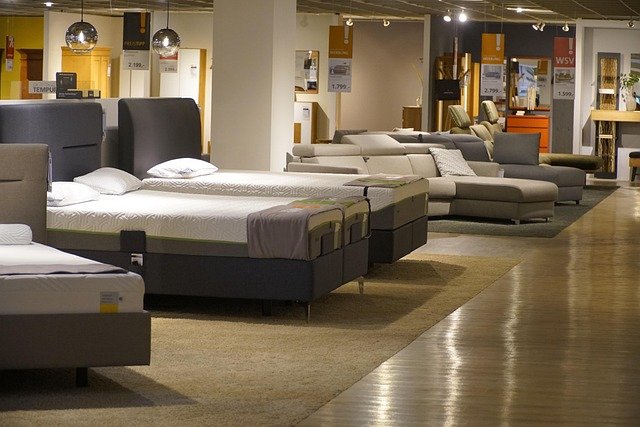Smart Furniture Buying: A Guide to Quality Finds on a Budget
Furnishing your home doesn't have to drain your savings. Learn how to shop smart for furniture—prioritize key pieces, scout the best used markets, time purchases for sales, and build a long-term plan that balances cost and durability. Practical tips for budget-friendly, high-quality home decor.

Finding great furniture on a tight budget is more about strategy than sacrifice. With careful planning, a few savvy shopping habits, and an eye for value, you can assemble a comfortable, stylish home without overspending. Below are practical steps to stretch your furniture dollars while prioritizing quality and longevity.
Maximizing Your Furniture Budget
Start by breaking your overall budget into targeted allocations instead of treating it as a single number. Rank items by importance and frequency of use: invest more in high-contact pieces like sofas and beds because their comfort and durability matter most. Allocate less for decorative items or temporary accent furniture.
When deciding where to spend, focus on long-term value rather than only upfront cost. A well-made sofa or a sturdy bed frame may cost more initially but can save money over time by lasting many years. Consider materials, construction, warranty, and how the piece will be used daily. Splurging on the essentials and economizing on accents will typically yield a better, longer-lasting setup.
Where to Find Quality Used Furniture
Secondhand markets are treasure troves for budget-conscious shoppers. Local consignment stores, estate and garage sales, thrift shops, and online platforms often list pieces with superior craftsmanship compared to cheaper mass-produced items.
When evaluating used furniture, perform a thorough inspection. Check for structural stability—look under tables and chairs for solid joinery and no wobble. For upholstered pieces, inspect frame integrity, spring tension, and the condition of the fabric or leather. Smell for mustiness, which can indicate mold, and look for signs of pests or water damage. Ask about the item’s history and, when possible, test pieces in person.
If you find a vintage or solid-wood item with superficial wear, repairs like reupholstering or refinishing can transform it into a standout piece for far less than buying new. Many older items were built with higher-quality materials, making them excellent candidates for restoration.
Smart Shopping Strategies for Home Furnishings
Timing and research can unlock significant savings. Retailers often run substantial discounts around major holidays, during end-of-season clearances, and when new models are introduced. Sign up for store newsletters and follow brands on social media to receive promotions and early-access deals.
Don’t overlook floor models and slightly imperfect items—floor samples are frequently discounted and can offer deep savings if cosmetic blemishes don’t bother you. Similarly, pieces with minor damage that can be fixed affordably are good candidates for bargains.
Compare prices across multiple sellers and use price-tracking tools or browser extensions to monitor changes. If you’re patient, cart-watching combined with coupon stacking can reduce costs dramatically. Also factor in delivery fees and return policies: a low sticker price can be offset by high shipping or restocking charges.
Comparing New vs. Used Furniture Options
| Furniture Type | New (Average Cost) | Used (Average Cost) | Typical Lifespan |
|---|---|---|---|
| Sofa | $600-2,000 | $200-800 | 7-15 years |
| Dining Table | $500-2,500 | $150-1,000 | 10-20 years |
| Bed Frame | $300-1,500 | $100-600 | 15-20 years |
| Dresser | $400-2,000 | $100-800 | 10-20 years |
Prices, rates, or cost estimates mentioned in this article are based on the latest available information but may change over time. Independent research is advised before making financial decisions.
Creating a Long-term Furniture Plan
Think beyond immediate needs and build a furnishing roadmap that spans months or years. Prioritize essentials first: a comfortable bed, a supportive sofa, and key storage pieces. As your budget allows, add complementary items like lighting, rugs, and decorative accessories.
Opt for versatile furniture that adapts to different rooms and layouts—modular sofas, extendable dining tables, and multi-purpose storage units deliver more value per dollar. Neutral colors and timeless silhouettes also extend relevance over trends, allowing you to refresh the look with low-cost accents rather than replacing major pieces.
If you anticipate moving or changing spaces, consider portability and dimensions when choosing items. Investing in a few higher-quality core pieces and supplementing with budget-friendly accents enables gradual upgrades without compromising the home’s overall cohesion.
Final Tips for Confident Purchases
- Educate yourself about materials and construction—solid wood, mortise-and-tenon joinery, and high-density foam are indicators of durability.
- Always measure your space and doorways before buying to avoid returns and fitting hassles.
- Negotiate when possible, especially at consignment stores or private sales—sellers often expect offers.
- Keep receipts and warranties; they’re useful if repairs or replacements become necessary.
Smart furniture shopping is a mix of planning, patience, and selective investment. By prioritizing key items, exploring used options, leveraging sales, and thinking long term, you can furnish a comfortable, attractive home that stands the test of time without blowing your budget.






